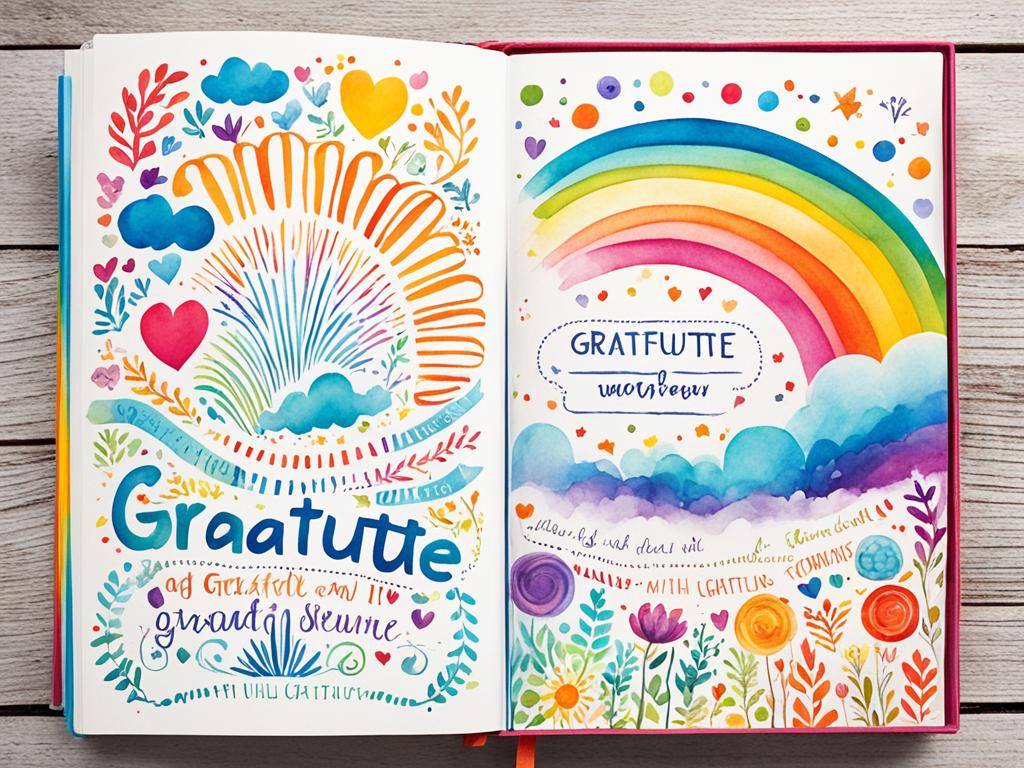
Positive Thinking Exercises to Boost Your Mood
Thinking positively can greatly improve our well-being. This article will show you positive thinking exercises to make you feel better and more hopeful. You’ll learn about the strength of affirmations and how gratitude practice helps. These techniques will help you build a positive self-esteem and make you more resilient.
These exercises are great for managing stress, boosting your optimistic outlook, or just making your days better. By using mindfulness, visualizations, and positive self-talk, you can change your life. You’ll see how positive thinking can make you more resilient and happy.

Let’s dive into how to use these positive thinking strategies. You’ll learn to control your feelings and see life in a more optimistic way.
The Power of Positive Affirmations
Positive affirmations can change your thoughts and beliefs. They help you love yourself more. This part talks about making affirmations that fit you and the need to say them often for real change.
Crafting Affirmations for Self-Love
To make positive affirmations, think about what you need and want. Reflect on where you want more self-love. Make affirmations that are personal, specific, and in the present tense, like “I am worthy of love and respect” or “I accept my flaws with kindness.”
Repeating Affirmations for Lasting Impact
Being consistent with affirmation practice is key. Say your positive affirmations often, like when you wake up, during meditation, or during the day. This can change your positive self-talk and build deep self-love. It takes time and repeating for these affirmations to stick in your mind.
By using positive affirmations, you start a journey of self-discovery and acceptance. This can lead to a happier and more fulfilling life.

Mindfulness: Finding Peace in the Present Moment
In today’s fast-paced world, it’s easy to get caught up in our thoughts and worries. Mindfulness offers a way to find peace in the present. It helps us focus on the now, without judgment.
Mindfulness means being fully present and attentive. It’s about noticing our feelings and experiences without judgment. This practice helps us find inner peace and awareness of the present.
Mindfulness can reduce stress and anxiety. It helps us stop worrying about the past or future. By practicing meditation, we can find calm and clarity in tough times.
Mindfulness also improves our well-being and focus. It makes us more present and attentive. This leads to better decision-making, creativity, and deeper connections with others.

Adding mindfulness to your daily life is easy. Just take a few moments each day to pause and breathe. You can try guided meditation, a mindful walk, or silent reflection. Make mindfulness a regular part of your routine.
By being mindful, you can tap into the power of the present moment. This can bring you peace and clarity. Start your mindfulness journey and reach your full potential.
Positive Thinking Exercise: Gratitude Practice
Practicing gratitude daily can change how you see life’s positive sides. This simple act can deeply affect your mood and overall happiness.
Keeping a Gratitude Journal
Keeping a gratitude journal is a great way to practice gratitude. Spend a few minutes each day thinking about what you’re thankful for. This could be your health, family, small wins, or the joys you often miss.
Writing down what you’re grateful for helps your brain focus on life’s positives. This leads to a more positive outlook and more happiness.
Expressing Gratitude to Others
Expressing thanks to those around you is also powerful. Write a heartfelt note, send a kind text, or just tell someone you value them. This act of expressing gratitude can make relationships stronger and make everyone feel important.
Adding gratitude practice to your daily life changes your mental and emotional health. By focusing on what you’re thankful for, you can become more positive and resilient.

Visualizations: Envisioning Your Desired Reality
Using your imagination can change your life. By practicing positive visualizations, you can make a mental plan for your ideal life. This part talks about two key visualization exercises: making a vision board and doing guided imagery.
Creating a Vision Board
A vision board is a mix of images, pictures, and affirmations that show what you want to achieve. It’s a way to use positive visualizations and mental rehearsal to make your dreams come true. Begin by picking inspiring images and words that match your goals. Put them on a board, either real or digital, and let your creativity shine.
Guided Imagery for Relaxation
Guided imagery uses your mind to create vivid mental pictures. It helps you imagine a peaceful place, which can make you feel calm and less stressed. Imagine a quiet beach or a green forest to use your positive visualizations and find peace inside.

Adding these visualization exercises to your self-care can greatly improve your life. By seeing your ideal life and letting your imagination lead, you can use the power of positive thinking. This can help you reach your goals.
Positive Self-Talk: Reframing Negative Thoughts
Positive self-talk is incredibly powerful. By changing negative thoughts to more positive ones, you can build a mindset that helps you bounce back and stay well. This change in thinking is key in positive psychology and can really change how you see things.
When things get tough or you doubt yourself, it’s important to focus on positive thoughts. Instead of focusing on the negative, ask, “How can I look at this positively?” This change in view can move you from a fixed, negative mindset to a more open, positive one. By choosing to see the good in a situation, you can stop negative thinking and feel in control again.
Positive self-talk is great for handling stress and anxiety. It also helps build confidence and self-esteem. By highlighting your strengths, celebrating your wins, and supporting yourself, you can grow a resilient and positive outlook. This outlook will help you in every part of your life.
FAQ
What are the benefits of practicing positive thinking exercises?
Positive thinking exercises boost your mood and help you see the bright side. They increase self-esteem and make you more resilient. These practices also improve focus, bring peace, and help you appreciate life more.
How can affirmations help with positive thinking?
Positive affirmations change your thoughts and beliefs. By making affirmations that focus on self-love, you can change your mindset. This leads to a more positive view of yourself.
What is the connection between mindfulness and positive thinking?
Mindfulness means being fully in the moment. It’s a key part of positive thinking. Through mindfulness, you can become more focused and calm. This helps you see life more optimistically.
How can a gratitude practice contribute to positive thinking?
Practicing gratitude, like keeping a journal or thanking others, shifts your focus to the good things in life. This makes you more optimistic and resilient. It increases your appreciation and well-being.
What are the benefits of using visualization exercises for positive thinking?
Visualization lets you use your imagination to picture your ideal life. This can make you think more positively, relax, and feel more motivated. It gives you a sense of purpose.
How can positive self-talk contribute to a more optimistic outlook?
How you talk to yourself affects your mood and outlook. Changing negative thoughts to positive ones helps you be more optimistic and resilient. This makes you face challenges with confidence and hope.



This is nice it’s really good
Nice one 👍